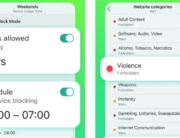A lot of the specific panels regarding the ProtoSnap LilyPad developing Board are simple and easy; they have one big component, and possibly a few tiny supporting components, like resistors.
Features:
- 5 Digital I/O pins
- 4 Analog pins
- ATmega328P
- Built-in LED on pin 13
- Built-in ON/OFF switch
- Built-in power supply socket (JST connector) for the 3.7V LiPo battery and asking circuit ( no extra battery pack charger required)
- Simplified design with less pins, offering more room for sewing or less complex projects
Central towards the Simple board could be the ATmega328 — the major black colored square in the center of the board.
This is basically the microprocessor, the “brains regarding the procedure.” This is just what shops and executes your Arduino design. Surrounding the ATmega328 are some passive components that are supporting absolutely nothing all that important for your requirements.
Towards the right for the ATmega328 (though it will be difficult to see unless it really is lit) is a little little Light-emitting Diode. This may be categorized as the utmost essential component on the Arduino. The Light-emitting Diode is linked with Arduino pin 13, and certainly will be applied for all you needs that are blinking. During the left that is top there is a momentary push key, utilized to reset the ATmega328. This may make whatever design the Arduino is operating begin from the top again.
There is an On/Off fall switch underneath the ATmega328. The functionality of the is pretty obvious, nonetheless it could be a misleading that is little. You will find a ways that are few power the ProtoSnap LilyPad developing Board, as well as in many cases, you will probably make use of the included FTDI board to power it making use of your computer’s USB. The On/Off switch will do absolutely nothing if the board is powered by the FTDI board. The switch just controls capacity to the Arduino if you are powering it via that small connector that is white the left for the ATmega.
The connector that is white the straightforward board is just a significantly typical energy connector, hailing through the JST group of connectors. It’s mostly aimed at linking certainly one of our Lithium Polymer batteries. LiPo’s are rechargable batteries, therefore we have additionally included a battery pack charger regarding the LilyPad Arduino Simple. Therefore you can charge the battery from your computer if you have the battery plugged in, and an FTDI Basic Breakout connected.
Oh, and where do you link the FTDI board? Well, spiking up towards the top of the Arduino Simple is really a right-angle male header that is six-pin. The feminine header on the FTDI board should slip smoothly onto that connector.
Powering the LilyPad Developing Board
The LilyPad LilyPad developing Board may be powered in 2 means:
For those who have a USB power supply available (some type of computer, 5V USB wall adapter, USB battery power, etc.), you are able to run the board from the USB cable and FTDI.
If you want assembling your shed to become more portable, it is simple to connect A lithium-polymer that is rechargable battery the board. See Technical Notes section to learn more about batteries and charging you.
Examining the Test Circuit
The LilyPad developing Board ships with pre-loaded code that showcases all the LilyPad pieces attached to it.
To power the LilyPad Development Board up, link it to your personal computer employing a FTDI and mini-B USB cable, or connect an E-Textiles Battery. Then slip the turn on the right part associated with the LilyPad Arduino an easy task to the ON position.
First the white LEDs turn on separately one at any given time. Then RGB LED will blink each color. When the series completes, the LilyPad developing Board are ready to just take inputs! Decide to try putting your little finger throughout the heat sensor. When the sensor reads a particular limit, the red LED will light. Putting your hand within the light sensor will switch on the white LEDs. Pushing on the momentary push switch may cause the buzzer to produce some sound. Flipping the LilyPad slip switch (on the bottom remaining side for the board) to the in place may cause the vibe motor to start vibrating for haptic feedback.
Establishing Arduino
Note: This guide assumes you may be utilizing the version that is latest of this Arduino IDE on the desktop. Should this be your time that is first using, please review our guide on setting up the Arduino IDE.






